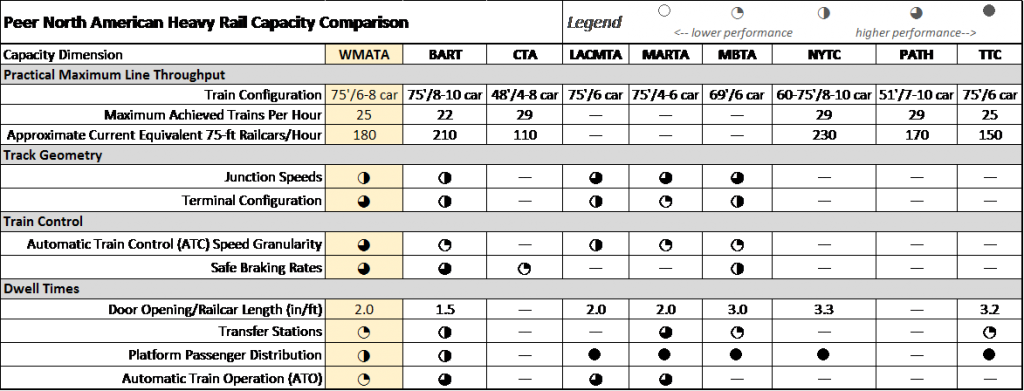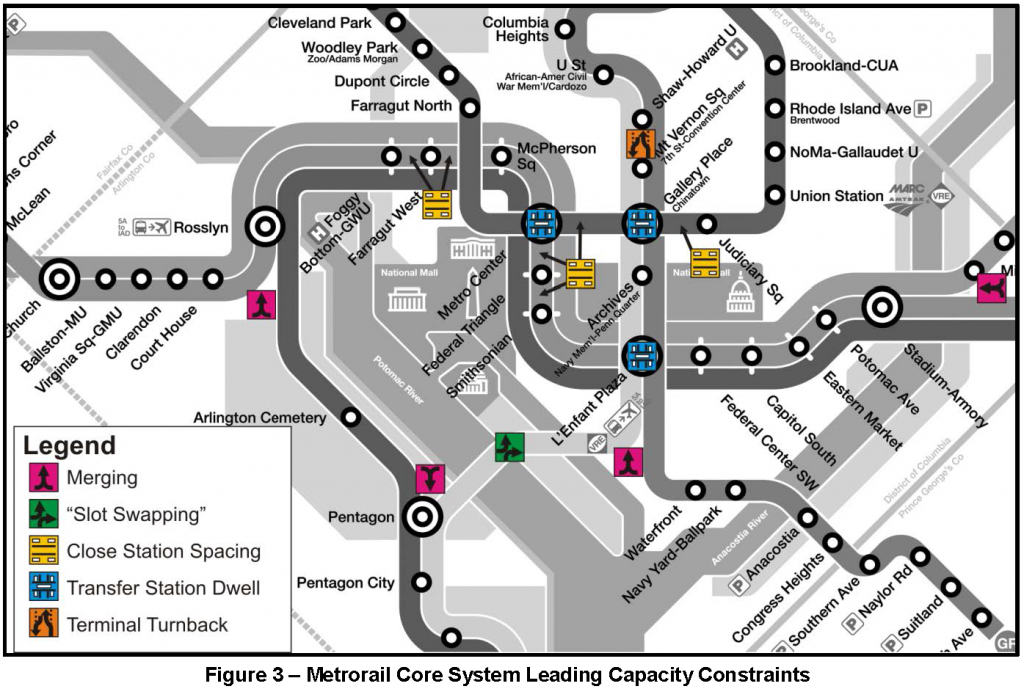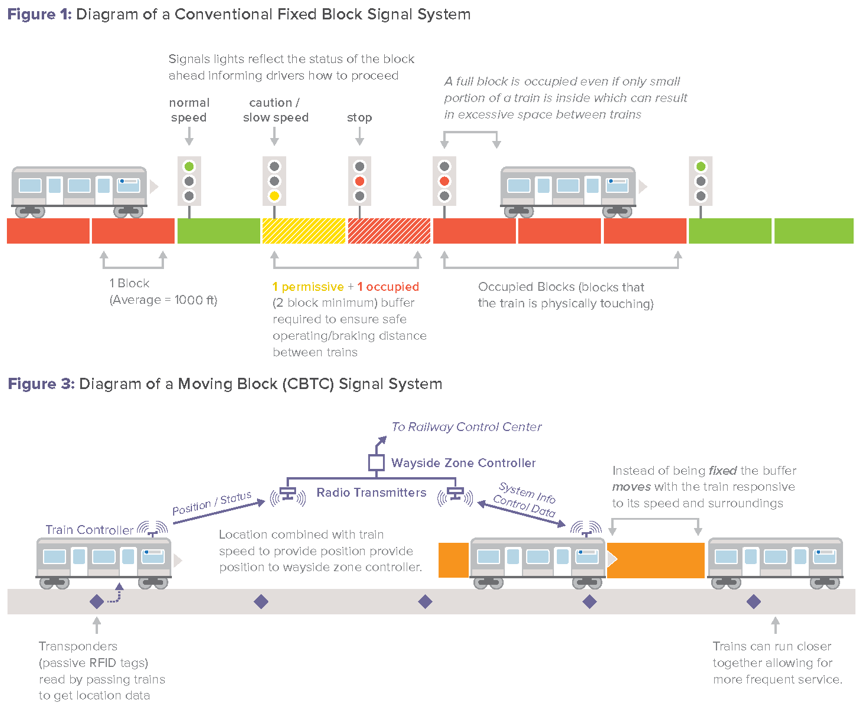MetroRail – Designed for Performance
Though it has several key constraints, the Metrorail System’s capacity compares favorably with its peers and even out-performs them in several key measures.
In a previous post, we explained that Metro doesn’t schedule more than 26 trains per hour at any point in an effort to balance reliability with high capacity operations. But it also raises some interesting questions: How does Metrorail’s capacity compare to peers? How does Metrorail compare to its peers in terms of train throughput and what are the specific constraints that prevent trains from operating more frequently? Are there any ways to increase the capacity of the existing system beyond 26 trains per hour?
We developed a white paper (PDF) to answer those questions. Some of the findings might surprise some Metroskeptics or armchair transit planners, but Metrorail has among the highest capacity infrastructure in the industry, which – when in a state of good repair – allow it to outperform its peers in a number of key areas.
Several physical and operation constraints limit the maximum number of trains that can be operated at various points in the Metrorail System.
- Merging at major line junctions, such as the Orange/Silver and Blue Line merge at Rosslyn, are potential sources of delay, similar to a freeway on-ramp.
- “Slot-swapping”, where trains diverge from one line and then merge with another, such as the Yellow Line which shares track with both the Blue and Green Lines, can cause a train to miss its scheduled slot on the other line.
- Close station spacing limits optimum train speed to account for a berthed train ahead, slowing the approach of following trains.
- Transfer station dwells limit train throughput as trains wait for large volumes of passengers to board and alight, which can be exacerbated by variable length trains.
- Terminals, both in the mid-line (such as Mt. Vernon Square) and beyond end-of-line stations (such as Greenbelt), limit throughput as trains change direction, which may require more time than the scheduled headway.
 When compared to other North American heavy rail systems, Metrorail scores high marks vs its peers in maximum achieved railcar throughput, and the degree to which the configuration of its tracks and train control design supports high capacity operation. Although junctions can introduce delays, Metro’s junctions, curves, and other track elements were engineered for relatively high speeds, while its train control system – which keeps trains safely spaced apart – was designed to permit a wide array of speed limits that closely match the design speeds of the tracks. This combination keeps trains moving quickly through the system.
When compared to other North American heavy rail systems, Metrorail scores high marks vs its peers in maximum achieved railcar throughput, and the degree to which the configuration of its tracks and train control design supports high capacity operation. Although junctions can introduce delays, Metro’s junctions, curves, and other track elements were engineered for relatively high speeds, while its train control system – which keeps trains safely spaced apart – was designed to permit a wide array of speed limits that closely match the design speeds of the tracks. This combination keeps trains moving quickly through the system.
Metrorail scores less favorably in dwell times due to high passenger volume in the system core, variable-length trains, and lack of full-time Automatic Train Operation (ATO), which improves operational consistency but hasn’t been in use system-wide since 2009. As we noted before, core station dwell times are a key capacity constraint, and Metro has seen these increase in the past decade or so with 90th percentile dwell times exceeding one minute on the Red Line at both Metro Center and Gallery Place. Although running all 8-car trains would improve the distribution of passengers on platforms, funding for this effort is not currently available. It is estimated that a return to full-time ATO and deployment of a railcar with four doors per side (only if operated exclusively along a line) could each increase throughput by a modest 1-2 trains per hour. Although it was not discussed in the paper, operating open gangway railcars would increase person throughput by opening space between cars to passengers.
Finally, several transit agencies are installing moving block, or Communications-Based Train Control (CBTC) systems, in an effort to upgrade old equipment, or improve reliability and capacity. While conventional train control systems use track circuits placed at regular intervals called “blocks” to locate trains, CBTC systems can improve the accuracy of train positions by allowing trains to communicate to one another indirectly, allowing them to operate closer together. But would this increase Metrorail’s capacity? To find out we conducted simulations on the core of the Blue/Orange/Silver Line corridor. This revealed that our existing train control system has very short fixed blocks (as short as 200 feet) and permits many speed limits, which allows close train spacing and limits the positional accuracy gains that a CBTC system might provide. When combined with CBTC’s communication latency between successive trains, the CBTC system was estimated to increase maximum throughput by only about one train per hour. Given that CBTC systems can cost hundreds of millions of dollars, the benefits may not be worth the costs.
Did you learn anything new from this post?




Recent Comments